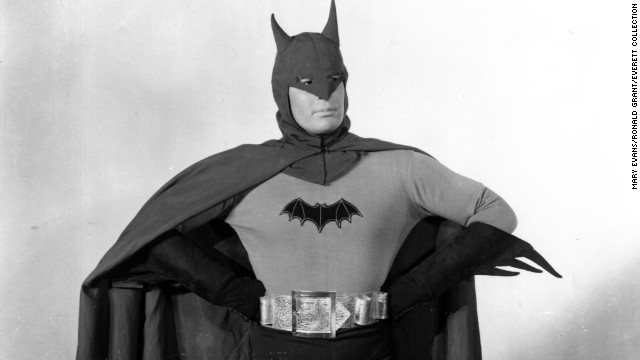***********************************
Age-related vision loss is common and
devastating. But new research suggests that physical activity might
protect our eyes as we age.
There have been suggestions that exercise
might reduce the risk of macular degeneration, which occurs when neurons
in the central part of the retina deteriorate. The disease robs
millions of older Americans of clear vision. A 2009 study of more than 40,000 middle-aged distance runners,
for instance, found that those covering the most miles had the least
likelihood of developing the disease. But the study did not compare
runners to non-runners, limiting its usefulness. It also did not try to
explain how exercise might affect the incidence of an eye disease.
So, more recently, researchers at Emory
University in Atlanta and the Atlanta Veterans Administration Medical
Center in Decatur, Ga., took up that question for a study published last month in The Journal of Neuroscience.
Their interest was motivated in part by animal research at the V.A.
medical center. That work had determined that exercise increases the
levels of substances known as growth factors in the animals’ bloodstream
and brains. These growth factors, especially one called brain-derived
neurotrophic factor, or B.D.N.F., are known to contribute to the health
and well-being of neurons and consequently, it is thought, to
improvements in brain health and cognition after regular exercise.
But the brain is not the only body part to
contain neurons, as the researchers behind the new study knew. The
retina does as well, and the researchers wondered whether exercise might
raise levels of B.D.N.F. there, too, potentially affecting retinal
health and vision.
To test that possibility, the researchers
gathered adult, healthy lab mice. Half of these were allowed to remain
sedentary throughout the day, while the other animals began running on
little treadmills at a gentle rodent pace for about an hour a day. After
two weeks, half of the mice in each group were exposed to a searingly
bright light for four hours. The other animals stayed in dimly lit
cages. This light exposure is a widely used and accepted means of
inducing retinal degeneration in animals. It doesn’t precisely mimic the
slowly progressing disease in humans, obviously. But it causes a
comparable if time-compressed loss of retinal neurons.
The mice then returned to their former
routine — running or not exercising — for another two weeks, after which
the scientists measured the number of neurons in each animal’s eyes.
The unexercised mice exposed to the bright light were experiencing, by
then, severe retinal degeneration. Almost 75 percent of the neurons in
their retinas that detect light had died. The animals’ vision was
failing.
But the mice that had exercised before being
exposed to the light retained about twice as many functioning retinal
neurons as the sedentary animals; in addition, those cells were more
responsive to normal light than the surviving retinal neurons in the
unexercised mice. Exercise, it seems, had armored the runners’ retinas.
Separately, the researchers had other mice
run or sit around for two weeks, and then measured levels of B.D.N.F. in
their eyes and bloodstreams. The runners had far more. Tellingly, when
the scientists injected still other mice with a chemical that blocks
the uptake of the growth factor before allowing them to run and exposing
them to the bright light, their eyes deteriorated as badly as among
sedentary rodents. When the mice could not process B.D.N.F., exercise
did not safeguard their eyes.
Taken together, these experiments strongly
suggest that “exercise protects vision, at least in mice, by increasing
B.D.N.F. in the retina,” said Jeffrey Boatright, an associate professor
of ophthalmology at Emory University School of Medicine and a co-author
of the study.
But obviously, mice are not people, so
whether exercise can prevent or ameliorate macular degeneration in human
eyes is “impossible to know, based on the data we have now,” said
Machelle Pardue, a research career scientist at the Atlanta Veterans
Administration Medical Center, who is the senior author of the study.
She and her colleagues are trying to find ways to determine the impact
of exercise on human eyes. But such experiments will take years to
return results.
For now, she and Dr. Boatright said, people
who are concerned about their vision, and especially those with a family
history of retinal degeneration, might want to discuss an exercise
program with their doctor. “As potential treatments go,” she said, “it’s
cheap, easy and safe.”
Dr. Boatright agreed, adding that eye
researchers have been trying for some time to find a way to externally
deliver growth factors or drugs to aging eyes, but the available methods
typically involve injections into the retina, a process that is
complicated, chancy, pricey, and fundamentally objectionable.
Now, though, “it’s beginning to look like we
may have this other method” — exercise — “that costs almost nothing and
results in you making your own growth factors, which is so much safer
and more pleasant than having a needle stuck into your eyeball,” he
said, getting no disagreement from me.
***********************************


 .
You know — that one co-worker who is either overly arrogant, lazy, or
talks your ear off? Even if you consider yourself an easy-going person
to work with, you’ve probably encountered that one colleague who drives
you up your cubicle walls.
.
You know — that one co-worker who is either overly arrogant, lazy, or
talks your ear off? Even if you consider yourself an easy-going person
to work with, you’ve probably encountered that one colleague who drives
you up your cubicle walls.